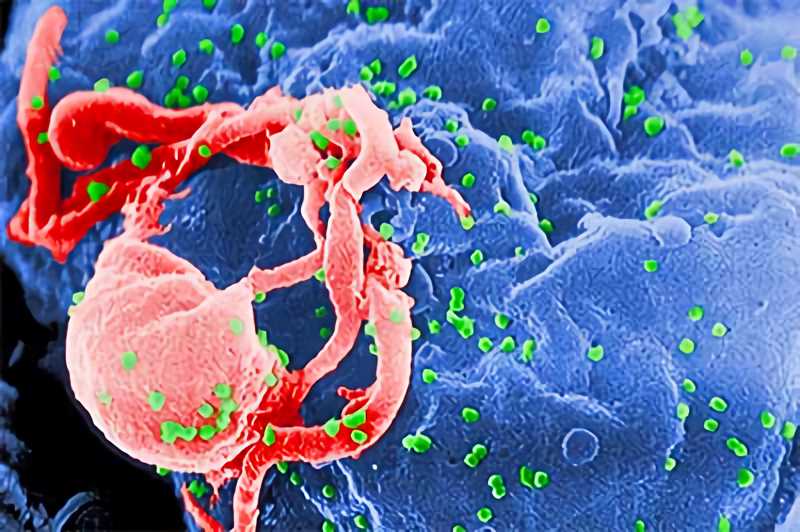Reticuloendotheliosis Virus Vaccines
Creative Biolabs is a world leader in the field of vaccine development and can offer high-quality viral vaccines for use in prevention of viral infections. By consistently delivering the highest standards of quality, professionalism, and integrity, we want to become the partner of a choice for your requirements. Reticuloendotheliosis viruses have been shown to be causative of tumors in a variety of avian species. With our extensive experience and advanced platform, we are therefore confident in offering the best vaccine development services against reticuloendotheliosis virus.

Reticuloendotheliosis viruses (REVs) are a group of type C avian retroviruses which was first isolated from a turkey in 1957. All retroviruses replicate their genomes via a DNA intermediate that is integrated into the nuclear DNA of the host cell and is referred to as a “provirus.” REV can be transmitted vertically in eggs, horizontally by contact with infected birds, or mechanically by insect vectors. REV may lead to increased susceptibility to other pathogens and is associated with a range of disease syndromes including anemia, immunosuppression, neoplasia, runting, and feathering abnormalities in many avian hosts worldwide. They have many hosts and the natural hosts include chicken, peafowl, turkey, duck, goose, pheasant, and several other bird species. REVs are commonly found in poultry farms and have caused a notable economic loss worldwide.
Subunit REV Vaccine
REV genome consists of three structural genes (gag, pol, and env) flanked by long-terminal repeats. The major mature env gene products of REVs are the surface glycoprotein (gp90) which is associated with virus neutralization and is known to be the major candidate antigen for vaccines and serological diagnosis. There is a subunit vaccine comprised of gp90 protein and adjuvant of cytosine-phosphate-guanine oligodeoxynucleotide (CpG-ODN) to hens to determine if it protects their chicks against REV infection. Viremia and growth rate were measured weekly and statistically analyzed. The results suggest that the vaccine-induced serological antibody production against REV in both hens and their hatched chicks. In addition, the maternal antibodies induced by the gp90 protein vaccine effectively protected majority of the chicks from REV infection. Overall, this subunit vaccine may be a potential vaccine candidate that had good immunogenicity and could be an auxiliary measure to accelerate the eradication of REV.
Combined REV Vaccines
Marek’s disease virus (MDV) and REV cause Marek’s disease (MD) and reticuloendotheliosis (RE), respectively. Co-infection with MDV and REV is common in chickens, causing serious losses to the poultry industry. Thus, Chinese field strains of MDV and REV were used as challenge viruses to evaluate the pathogenicity of co-infection and the influence of vaccination in chickens. After administrated this combined vaccine, compared to the MDV-challenged group, the protective index of the mortality and tumor rates decreased. These results indicated that MDV-REV combined vaccine significantly increased disease severity and reduced the vaccine efficacy.
DNA Vaccines
A plasmid was constructed expressing fusion proteins of REV envelope (env) and VP22 of Gallid herpesvirus 2 or REV gag and VP22. Birds vaccinated with these recombinant plasmids developed neutralizing antibodies, showed delayed replication of virus and had significantly less infection of lymphocytes, specifically CD4+ lymphocytes. The vaccine offered partial protection, birds in field conditions and breeding facilities could potentially benefit from increased immunity when vaccinated. In addition, a strategy was undertaken to evaluate the ability of DNA vaccination to protect chickens against REV infection and to determine whether codon optimization and the woodchuck hepatitis virus posttranscriptional regulatory element (WPRE) could improve the immunogenicity of the DNA vaccines. The wild-type and codon-optimized gp90 genes of REV with WPRE were cloned into pCAGGS vector, and designated as pCAGWoptigp90. It elicited significantly higher humoral and cellular immune responses than those plasmids without codon optimization or WPRE. The results highlight the potential value of DNA vaccination in the prevention of REV infection and suggest that codon optimization and WPRE could increase the efficacy of DNA vaccines.
Creative Biolabs is a highly proactive, robust, and diversified company with a strong, scientifically-proven background of viral vaccine development. We have experts who are able to help you with the vaccine development against reticuloendotheliosis virus. Our scientists are confident in offering the best services and products upon request!
All of our products can only be used for research purposes. These vaccine ingredients CANNOT be used directly on humans or animals.


